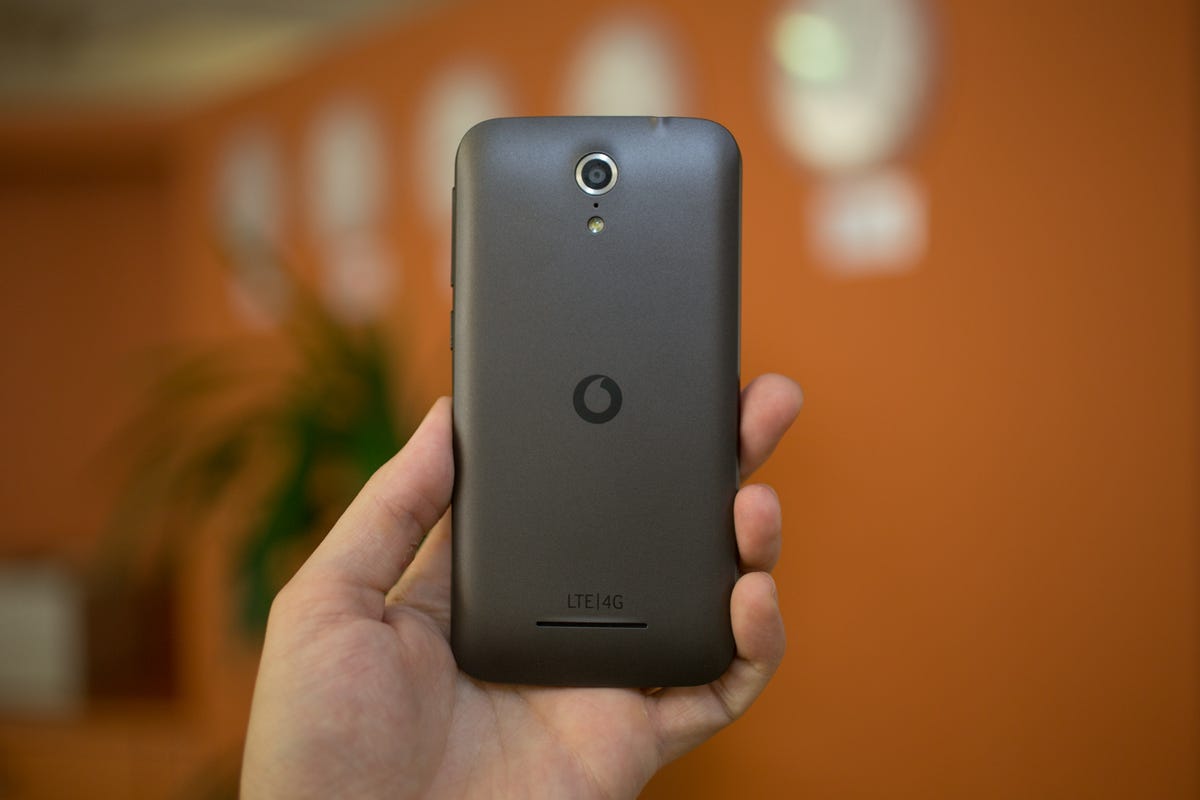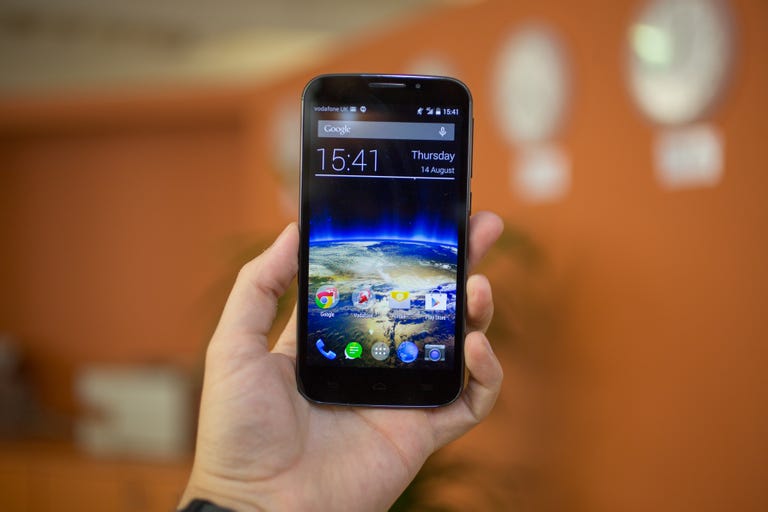 Why You Can Trust CNET
Why You Can Trust CNET Vodafone Smart 4 Power review: A cheap 4G phone with a big screen
The Vodafone Smart 4 Power provides super-fast 4G data speeds for watching videos on its big 5-inch screen. It doesn't cost a fortune either.
If you crave a 4G phone, but can't afford a top-end handset like the Samsung Galaxy S5 as well as a pricey new data contract, cast your eyes over Vodafone's pair of more affordable 4G phones. The Smart 4 Power is a 5-inch Android KitKat device that you can pick up only from Vodafone for £175 on pay as you go.
The Good
The Bad
The Bottom Line
If that's a bit rich, you can plump for the 4.7-inch Smart 4 Turbo , which you can snag for £135. Both phones come with Android 4.4.2 KitKat, quad-core processors, 5-megapixel cameras, 4GB of on-board storage and microSD card slots. They can only be purchased from one of Vodafone's physical shops.
Design
There's no mistaking that the Power comes from the same family as the Turbo as they're clad in identical grey jackets. That's not much of a positive, however, as I thought the Turbo looked intensely dull and the Power isn't much better.
The back is a plain expanse of rubberised grey plastic, although slight physical tweaks such as a more rounded corners, a slightly slimmer body and less angled edges help the Power look marginally more premium. Which is lucky, given that it costs more.

It's 141mm long and 71mm wide, making it a little big to use in one hand, although its 162g weight means it should sit fairly unnoticed in your pocket. Its reasonably chunky proportions help make the phone feel more sturdy and the rubberised back does a good job of shaking off knocks and bumps -- although drop it hard on concrete and that screen will surely shatter like any top-end phone.
The phone comes with 4GB of built-in storage, which won't last long. It has a microSD card slot, giving more space for music and videos, and you can move some apps across as well -- although you do have to install them to your phone first, so you'll have to have some spare room to begin with.
Display
The Power's 5-inch display has a 960x540-pixel resolution, which results in a pixel density of 220 pixels per inch. That's very much at the bottom of what I'd expect, even on a budget phone. The Motorola Moto G 's 4.5-inch screen has a 720p display with 326ppi -- and can be picked up for roughly the same money as the Power.
It actually has almost the same pixel density as the 4.5-inch Turbo, although the Power's display is better quality. It's a tad brighter, has better colours, seems slightly less reflective and has better viewing angles, making it much more pleasant to use than its little brother. It's no match for the Moto G still -- which is crisp and vivid -- but it's significantly bigger, which will come in handy if you want to watch video on the move.
Android KitKat software
The phone arrives running Android 4.4.2 KitKat, which is the most recent major release. KitKat is now on version 4.4.4, so it's not the absolute latest version, but it's recent enough for a budget phone. Vodafone has done very little to the interface, so it's almost stock Android. You'll have the various home screens to fill up with apps and widgets, along with the app tray for any icons you don't want immediate access to. The stock Android camera app is on board, as well as the Chrome browser and Android gallery.
I'm glad Vodafone hasn't done much to the interface, as it makes it easier for new Android users to get to grips with, and a more stripped-down version of Android should be a little easier on the phone's processor. There are a few extras thrown in though, including an update centre and various bits of how-to software, but they don't get in the way and can be removed if you don't need them.
Processor and battery performance
The Power runs on a 1.3GHz quad-core processor, backed up by 1GB of RAM. Those are far from impressive specs, but the phone has enough to handle the basics well. Navigation around the Android interface was acceptable -- there were moments of sluggishness, but not really enough to be annoying -- and apps and menus opened reasonably quickly.
Tweeting, annoying your friends on Facebook, watching YouTube clips of hamsters eating burritos or editing images in Snapseed are all within the Power's capabilities. If you only want a phone for the everyday necessities, the Power will manage fine. It handled some light gaming as well, although the frame rate in Asphalt 8 did drop in the racer's more intense moments, resulting in choppy gameplay.
Keeping the phone running is a 3,000mAh battery, which is pretty capacious, particularly given the low-resolution display (which is less demanding of battery than a full HD screen). After streaming a video for two hours over 4G on full brightness, I found the power had dropped to 74 percent from a full charge, which is pretty decent.
With reasonably careful usage you won't struggle to get a full day of use from the Power. Keep the screen brightness down and avoid anything too demanding until you're home if you want to squeeze as much juice from it as you can.
Camera
A 5-megapixel camera sits on the back of the phone, which is the same as you'll find on the smaller Smart 4 Turbo. Unsurprisingly, it gives very similar results. Shots were adequately exposed and although clarity is pretty poor, there's enough detail for Facebook snaps. The colours aren't brilliant, however, and low-light areas contain rather a lot of image noise.
For quick snaps of your kids, your pets or your food, the camera will do the job, so long as you're in well-lit areas. If photography is a chief concern then it won't satisfy, but you really shouldn't be looking at the budget end of the market anyway.
Conclusion
The Vodafone Smart 4 Power won't impress those of you looking for a high-performance 4G phone packed with technology. Its big screen and 4G, though, make it a reasonable purchase if you crave video on the move but can't afford a higher-end phone. Your money could still be better spent on the Motorola Moto G, however -- as long as you don't mind the slightly smaller display.


